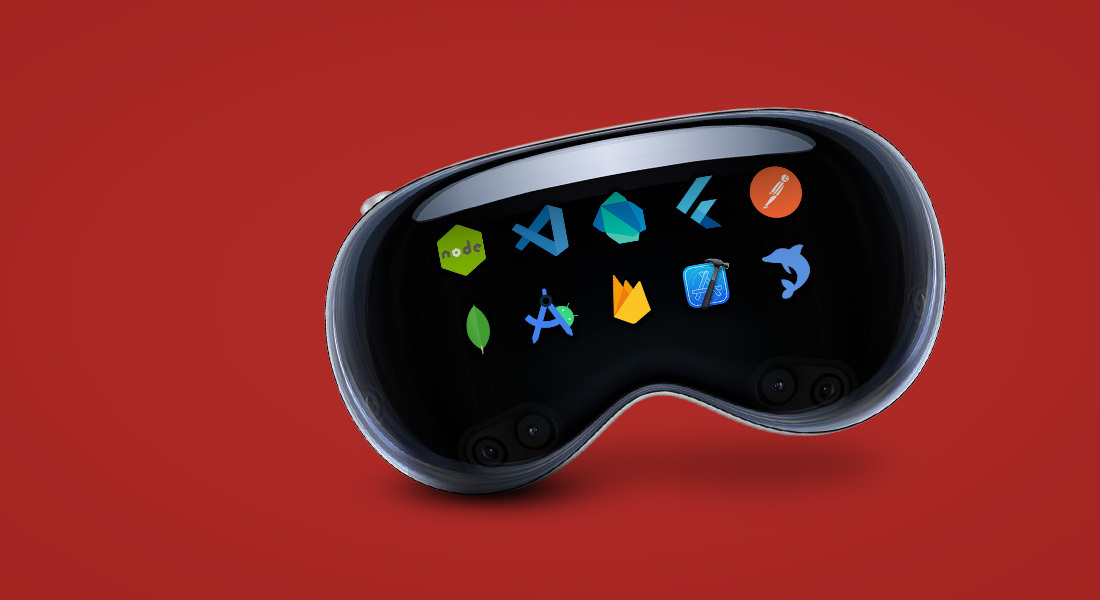AR, VR, and the future of work
and entertainment
AR, VR, and the future of work | and entertainment

Phones existed well before the iPhone came to be, yet most of them failed at successfully commodifying their device beyond their initial purchase price. They lacked the capability to download additional features and applications, limiting the device to mostly what it came out of the box with. A marketplace was required. One with buyers, sellers, and the freedom of choice. The App Store provided just that, incentivizing developers with a unified platform with millions of similar users, and incentivizing users through a plethora of applications, all through an organized mechanism. Can Apple do it again, but this time, with the Vision Pro?
In its infancy, the Vision Pro will serve as a point of difference for any brand brave (and resource-rich) enough to tap into the world of augmented reality. First movers, typically the Coca Cola’s & Nike’s of the world, will capitalize on the technology despite its heavy development price tag, living true to their created brand persona of adventure and novelty.
In the long term, with enough iPhone users pivoting to the Vision Pro or its successor, any brand that hadn’t hopped on the trend will be beating itself over it, with the augmented and virtual reality market eventually growing to overtake other categories in the market.
So whether you’re a consumer, marketer, or business owner, what does the era of AR/VR really mean to you?
What it means for marketers:
Augmented reality headsets will bring forth a new dimension to storytelling and consumer experience for marketers. Through fully immersive environments, users can be engaged in captivating and interactive campaigns that go beyond the realm of more traditional mediums, such as print and television. With Apple’s enhanced AR, objects can now be accurately recognized and tracked, allowing the device to seamlessly combine virtual elements into your real world.
This allows for many creative executions, for example in the real estate industry, through virtual house tours for real estate agencies. Imagine not being bound by appointments, geography, or lack of time; prospective buyers could tour multiple properties in the same time taken as one tour would previously. This also frees up resources at the agency, with real estate agents spending less time giving property tours and more time developing clientele.
Brands can also engage and enable potential customers to interact with their company and products through virtual showrooms and product demonstrations. Whether you want to attend Louis Vuitton’s sold-out Tokyo pop-up shop, spec out your new vehicle’s interior, or choose between different suites at a hotel property, these things can now be possible in a simulated setting. Marketers can now potentially double and even triple the foot traffic inside their stores, without actually filling it to the brim with real customers.
What it means for consumers:
For consumers, the era of augmented and virtual reality brings in a multitude of exciting possibilities. The landscape is expanding rapidly, offering a diverse variety of devices tailored for specific purposes. There’s the Meta Quest, catering to social interactions; Oculus, providing an immersive gaming experience; and Apple’s VR, designed for both office tasks and daily usage. This proliferation of device options makes sure that individuals can now choose the perfect fit for their unique needs and preferences.
One of the most intriguing prospects is the ability to seamlessly participate in virtual conferences, events, concerts, and gatherings, all from the comfort of one’s own space. The geographical barriers that once confined attendance to physical venues are dissolved, granting consumers the opportunity to engage with a global spectrum of experiences without the need for travel.
This technological advancement brings with it an increased variety of applications, enriching entertainment, education, communication, and more. As the market becomes more competitive due to the influx of different players, consumers can anticipate more accessible price points, making AR and VR experiences more attainable for a broader audience.
The ease of integration within the Apple ecosystem is another noteworthy aspect. The seamless connectivity between Macs, iPhones, and other devices simplifies the transition between different platforms, enabling fluid work experiences across various mediums and modes. The synchronization capabilities of Apple devices add an extra layer of convenience, allowing users to effortlessly pick up where they left off on a different device.
The introduction of Apple Gaming into the AR/VR equation raises intriguing questions about its impact. With Apple’s history of innovative and user-friendly interfaces, the gaming segment is likely to experience a significant transformation. This move could potentially bring about a new era of interactive and immersive gaming experiences, further blurring the boundaries between the virtual and real worlds.
What it means for business owners:
In the evolving landscape of work, the Apple Vision Pro could redefine how we approach training and skill development. Imagine employees participating in immersive virtual training programs that replicate real-life scenarios and environments. Whether it’s mastering intricate machinery or improving customer service expertise, VR-based training offers hands-on learning experiences that accelerate skill acquisition and boost employee capabilities.
Designers and creatives can unlock their full potential with AR/VR. It empowers them to visualize and iterate on designs in an immersive environment, fostering creativity and pushing the boundaries of innovation. Whether it’s architectural designs, product prototypes, or digital artwork, VR provides a revolutionary canvas for creative minds.
The introduction of the Vision Pro is a small step forward for Apple, but a big step forward for the entire industry. The reality we know and live in will soon be virtual and augmented – as a consumer, marketer, or business owner, are you prepared for this transition?